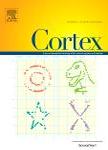版权所有:内蒙古大学图书馆 技术提供:维普资讯• 智图
内蒙古自治区呼和浩特市赛罕区大学西街235号 邮编: 010021

作者机构:Univ Leipzig Inst Psychol D-04109 Leipzig Germany Carl von Ossietzky Univ Oldenburg Dept Psychol Auditory Psychophysiol Lab Cluster Excellence Hearing4a11European Med Sch D-26129 Oldenburg Germany Max Planck Inst Human Cognit & Brain Sci Max Planck Res Grp Auditory Cognit Leipzig Germany
出 版 物:《CORTEX》 (皮质)
年 卷 期:2014年第53卷第1期
页 面:9-26页
核心收录:
学科分类:0402[教育学-心理学(可授教育学、理学学位)] 1002[医学-临床医学] 1001[医学-基础医学(可授医学、理学学位)] 10[医学]
基 金:Max Planck Society through a Max Planck Research group DFG German Research Foundation [Deutsche Forschungsgemeinschaft, DFG] [SCH 375/20-1]
主 题:Predictive coding Semantic expectation Auditory processing Omission mismatch negativity (MMN) Source localization
摘 要:Speech signals are often compromised by disruptions originating from external (e.g., masking noise) or internal (e.g., inaccurate articulation) sources. Speech comprehension thus entails detecting and replacing missing information based on predictive and restorative neural mechanisms. The present study targets predictive mechanisms by investigating the influence of a speech segment s predictability on early, modality-specific electrophysiological responses to this segment s omission. Predictability was manipulated in simple physical terms in a single-word framework (Experiment 1) or in more complex semantic terms in a sentence framework (Experiment 2). In both experiments, final consonants of the German words Lachs ([laks], salmon) or Latz ([lats], bib) were occasionally omitted, resulting in the syllable La ([lab no semantic meaning), while brain responses were measured with multi-channel electroencephalography (EEG). In both experiments, the occasional presentation of the fragment La elicited a larger omission response when the final speech segment had been predictable. The omission response occurred similar to 125-165 msec after the expected onset of the final segment and showed characteristics of the omission mismatch negativity (MMN), with generators in auditory cortical areas. Suggestive of a general auditory predictive mechanism at work, this main observation was robust against varying source of predictive information or attentional allocation, differing between the two experiments. Source localization further suggested the omission response enhancement by predictability to emerge from left superior temporal gyrus and left angular gyrus in both experiments, with additional experiment-specific contributions. These results are consistent with the existence of predictive coding mechanisms in the central auditory system, and suggestive of the general predictive properties of the auditory system to support spoken word recognition. (C) 2014 Elsevier Ltd. All rights